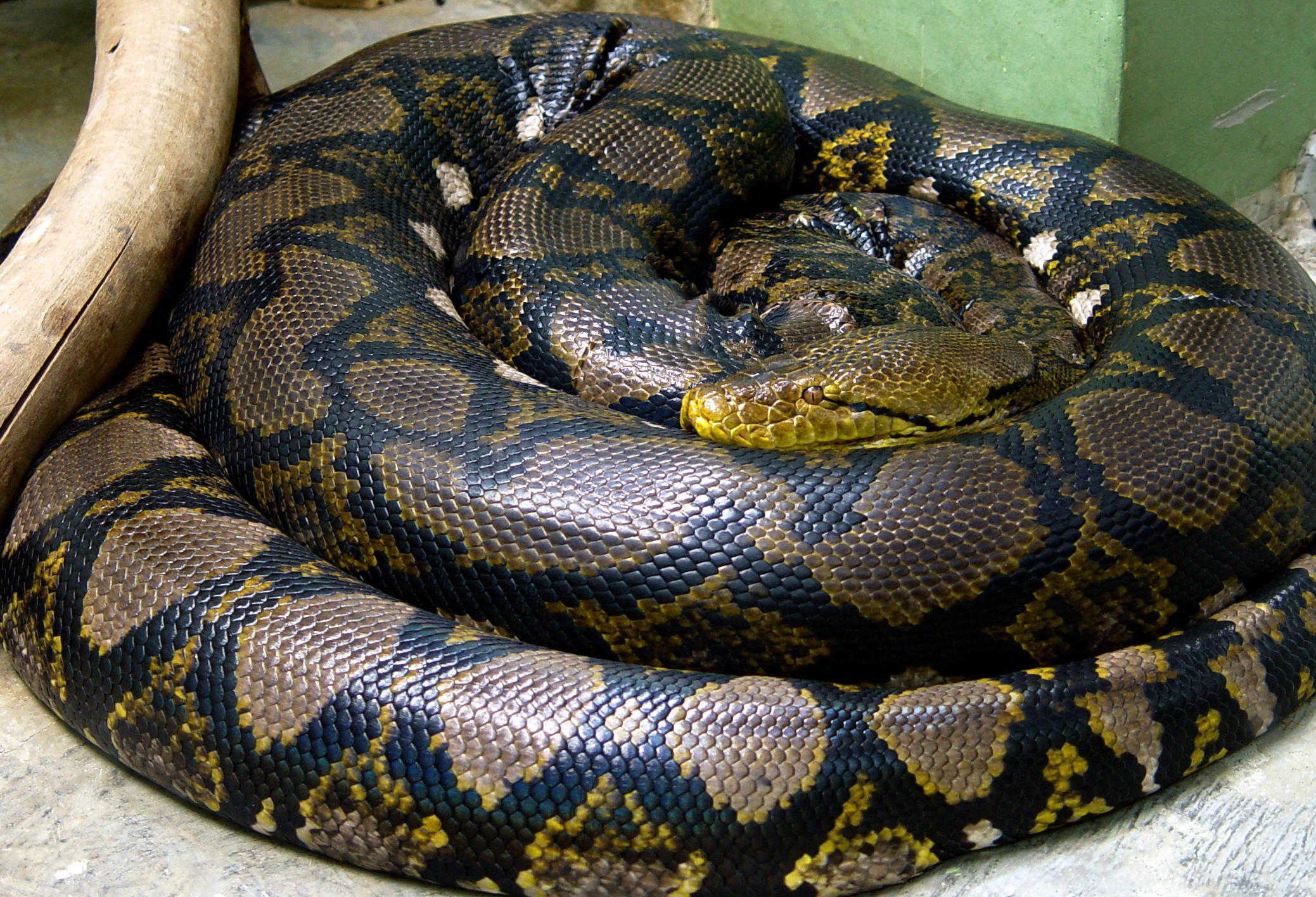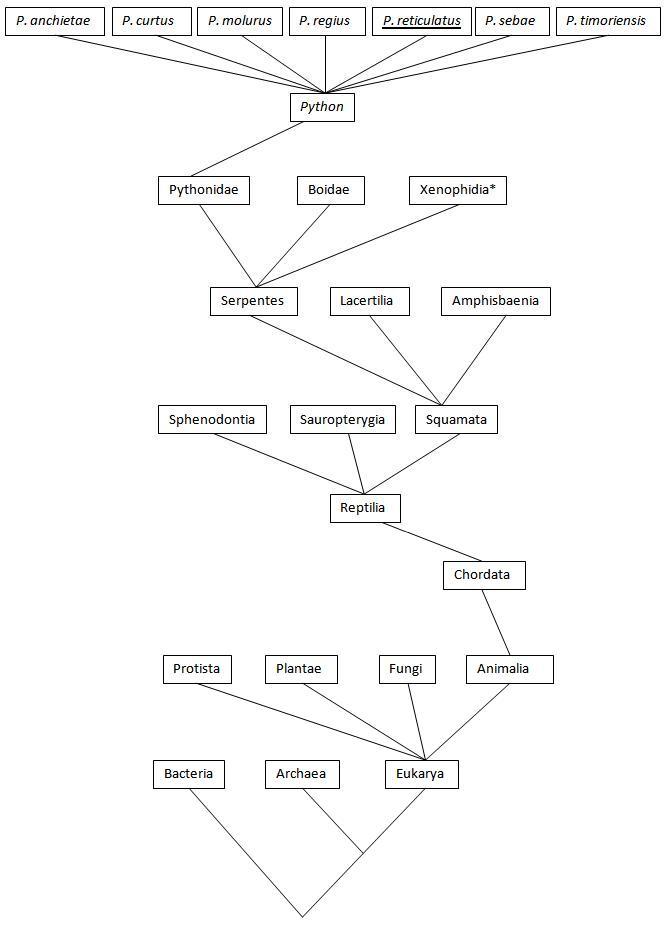Classification
 Scientific name - Python reticulatus
Scientific name - Python reticulatus
Common name - reticulated python
Domain
- Eukarya - Being eukaryotic, the reticulated python is like the other
eukaryotes in that it contains a nucleus within a membrane-bound cell.
Kingdom - Animalia
- Reticulated pythons are members of the kingdom animalia because they
are motile and heterotrophic (do not produce their own food).
Phylum - Chordata - Because it is in the phylum chordata, at some point in its life Python reticulatus has
a notocord (which gave rise to the backbone) a dorsal nerve cord
(giving rise to the brain and spinal cord), pharyngeal gill slits, an endostyle, and a post-anal tail; all characteristics of the chordates.
Class - Reptilia - Being a reptile, Python reticulatus is cold blooded, and has a body that is covered in scales. Its embryos are also covered by an amniotic membrane.
Order - Squamata - The
squamata consist of lizards and snakes. They are defined by their skin,
which is comprised primarily of scales. A feature of the squamata which
is found especially in the snakes is their ability to open their mouths
very wide in order to consumer their prey.
Family -
Pythonidae - Being a member of the pythonidae means that Python reticulatus
is non-venomous. The family pythonidae consists of some of the largest
snakes in the world, including the reticulated python, which competes
with the green anaconda for the title of world's longest snake.
Genus - Python - The genus Python consists of 7 species of non-venomous snakes. They are: Python
anchietae, Python curtus, Python molurus, Python regius, Python sebae,
Python timoriensis, and of course, Python reticulatus.
Species - Python
reticulatus
- Python reticulatus is the scientific name of the species, and refers
to the reticulated patterns which occur on the python's skin.
Phylogenetic Tree

*
Xenophidia is a superfamily consisting of Atractaspididae, Colubridae, Elapidae, Hydrophiidae, and Viperidae
This
page is Copyright ©2008 by Timothy N. Young

 Scientific name - Python reticulatus
Scientific name - Python reticulatus